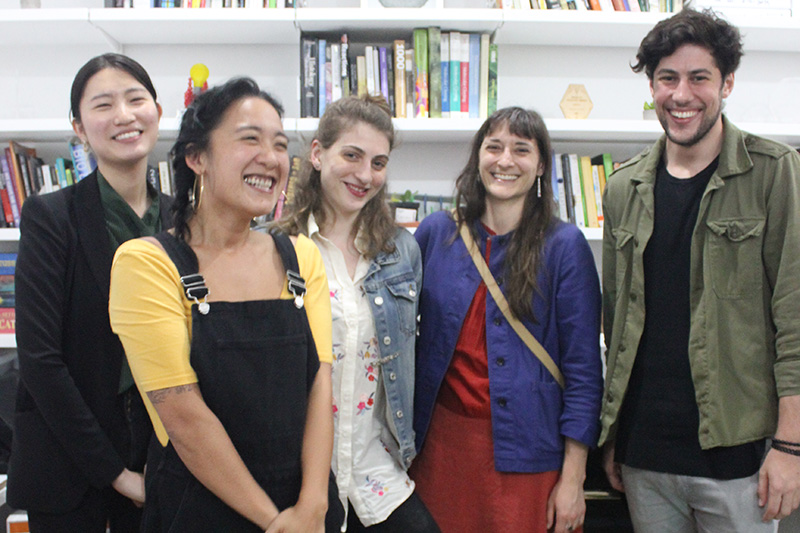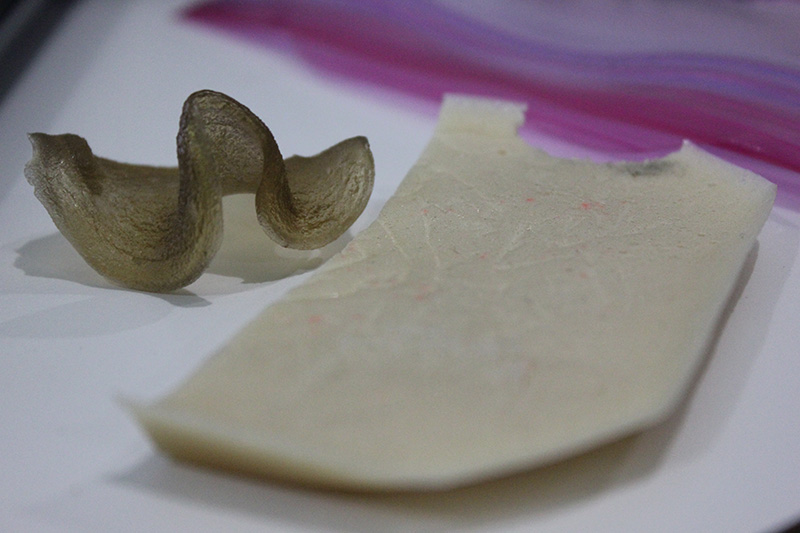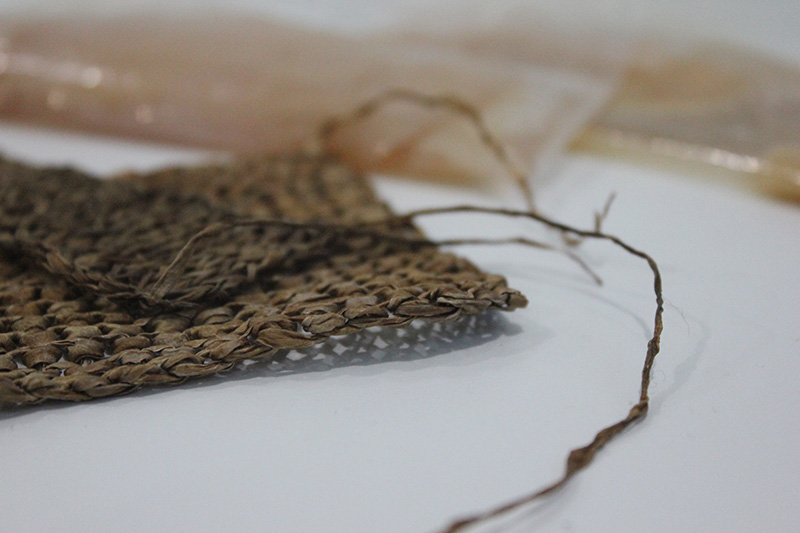For two years, FIT has partnered with Genspace, a synthetic biology lab in Brooklyn, to provide bench space and mentorship to select students using biodesign to research sustainable textiles. On May 29, this year’s Genspace Scholars presented their findings to a roomful of scientists.

This year’s crop of students, said Genspace co-founder Michael Flanagan, “are researching more novel, unique, and sustainable materials than ever.”
Accessories Design student and sneakerhead Jonathan Mateer experimented with biofoams that could replace ethylene vinyl acetate, a non-biodegradable plastic foam used to create the soft, rubbery midsoles of most sneakers. He came up with the idea in Performance Materials for Athletic Footwear, a course taught by adjunct faculty member Frank Zambrelli.
Using natural household products, Mateer created a firm foam that withstands 40 pounds of pressure—enough to be used in a shoe. He will be testing it further to see how it reacts to heat, water, and excess weight, but as he said at the Genspace event, “This is actual foam that we could use now if we wanted to replace EVA. And I mean now.”

Cellulose, a sturdy polymer made by plants, is the primary compound in plant-based fibers such as cotton and rayon. Some bacteria can produce cellulose, too, and recent research has explored this alternative, sustainable textile. Bacterial cellulose requires less water and pesticides than cotton does, but the colony consumes a significant amount of sugar, which itself is a resource-intensive agricultural product. Stephanie Stickle, Textile/Surface Design ’20, studied the effectiveness of using waste sugar left over from the beermaking process in growing bacterial cellulose. She collected spent grain from a local brewery, rinsed it in hot water to isolate the sugar, and fed that to bacterial colonies at different pHs, using turbinado sugar as a control. She took temperature and humidity readings using Arduino boards, inexpensive programmable circuit boards; after 23 days, she measured the thickness of the resulting material. While the colonies consuming waste sugar grew more slowly than those consuming virgin sugar, Stickle believes that the growth rates could be evened out by adjusting the pH.
Nga Yi Lam, Textile Development and Marketing, explored dyeing fabrics with brightly colored fungi, such as mushrooms, mold, and yeast. She was able to dye yarns pink, black, and white, using mold; the other fungi didn’t transmit enough color to be viable as dyes.
Lastly, 2018 Textile Development and Marketing graduate Morgana Kattermann played a video she created (along with Chui-Lian Lee ’18 and Valentina Gomez ’20) about Werewool, the project they presented at the 2018 Biodesign Challenge. They used enzymes to crosslink proteins from brightly colored coral cells, creating knittable red and blue fibers. Using chemistry present in nature, they explained, will provide sustainable methods of creating performance fibers. “Our big thing is trying to combine different proteins to get color without dyes and performance without synethics,” Lee said.

Joanne Arbuckle, deputy to the president for Industry Partnerships and Collaborative Programs at FIT, said that research projects like these are key to bringing the fashion industry back to New York. “The future of fashion is really in these textiles,” Arbuckle said. “If we don’t develop these things, there isn’t going to be fashion industry here.”
